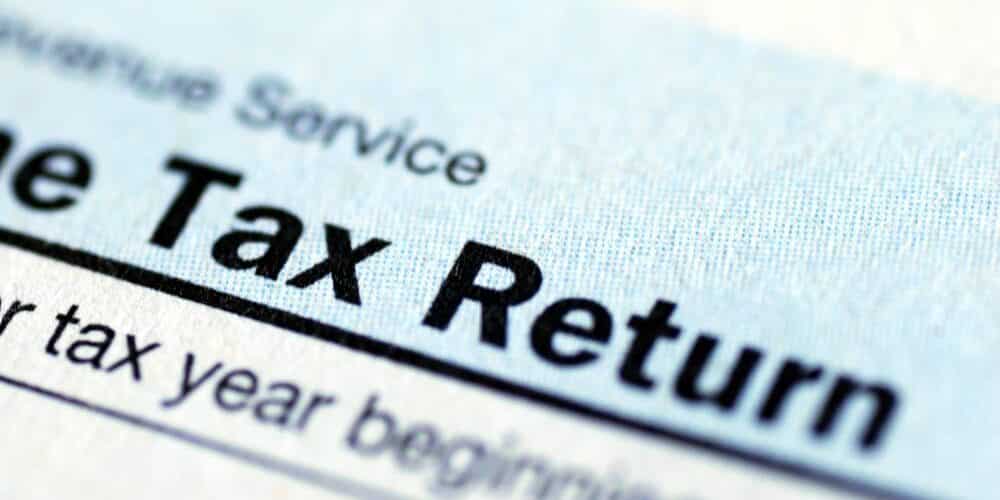
What Is A Tax Write Off And How Does It Work?
Under the provisions of the instant asset write-off, eligible businesses are able to submit a claim for an immediate deduction in the amount of the business component of the cost of an asset in the same year that the asset is first put into use or installed ready for use.
You can use an instant asset write-off to:
- multiple assets are allowed as long as the total cost of each transaction is less than the relevant threshold
- new and second-hand purchases.
It isn’t applicable to assets that aren’t subject to the simplified depreciation standards.
The $20,000 Instant Asset Write Off scheme for small businesses was a key part of the 2015/16 Federal Budget (and subsequent Federal Budgets subsequently). Small business owners have responded well to this technique. The $20,000 Instant Asset Write Off scheme allows business owners to write off depreciable assets worth less than $20,000 right now.
The $20,000 Instant Asset Write Off plan for small enterprises was an important component of the federal budget for 2015/16 (and successive federal budgets that have been presented since then). This method has demonstrated its widespread appeal among proprietors of small businesses. With the help of the $20,000 Instant Asset Write Off plan, business owners are given the opportunity to immediately write off depreciable assets that cost their company less than $20,000.
As a result of the recent outbreak of the coronavirus, it is anticipated that the federal government will take a courageous move and increase the quick asset write-off from $30,000 to $150,000.
The write-off level will be increased to $150,000 and extended to businesses with a revenue of up to $500 million, an increase from the previous barrier of $50 million. This was announced by the Morrison administration.
The 30th of June serves as the cutoff date for taking advantage of the increased limit. Examples of assets that might be eligible for a write-off include newly purchased machinery, computer gear, office fit-outs, furniture, and automobiles.
It is projected that using this new method will result in tax savings for Australian companies totalling $2.5 billion over the following two years.
What Does This Mean in Practice?
A write-off is a cost that can be deducted from your taxes. To calculate total taxable income for a small business, subtract tax write-offs from total revenue.
Qualifying write-offs must be a necessary part of running a firm and working in the industry every day. A write-off does not have to be 100% required, but it should be regarded a recurring expense that aids in the operation of the business
As you may be aware, deductions are normally available for purchases made by your company for your company. The $150,000 Instant Asset Write Off is designed to speed up the process of taking deductions for certain purchases.
Small firms (as defined by the ATO) have been permitted to immediately deduct business assets costing less than $150,000 since the system began. This allows business owners to deduct the asset in the same tax year that it was purchased.
This deduction can then be claimed on the business’s tax return for that particular year.
An instant asset write-off allows small enterprises (with an annual turnover of less than $500 million) to claim immediate deductions for new or used plant and equipment assets such as vehicles, tools, and office equipment up to $150,000 (this will fall to $1,000 on January 1, 2021). In the income year you’re claiming for, the assets must first be used or installed for use.
The amount you can deduct is determined by the asset’s acquisition date and the applicable threshold amount. On March 12, 2020, the thresholds and eligible turnovers changed; for more information, visit the ATO website.
A tax write-off is a company expense that can be deducted. Fees are any items purchased for profit in the course of running a business. To reduce overall taxable income, the cost of these goods is subtracted from revenue. Vehicle expenses and rent or mortgage payments are examples of write-offs.
Understanding Write-Offs
Accounting write-offs are commonly used by businesses to account for asset losses caused by a variety of conditions. As a result, write-offs normally result in a debit to an expense account and a credit to the equivalent asset account on the balance sheet.

Each write-off scenario is different, although expenses are normally shown on the income statement as well, after any revenues have been recognized.
The accounting entries required for a write-off are detailed in Generally Accepted Accounting Principles (GAAP). The straight write-off method and the allowance approach are the two most frequent company accounting procedures for write-offs.
The thresholds employed in each circumstance will likely differ. Unpaid bank loans, unsettled receivables, and losses on stored goods are three of the most typical business write-off tactics.
Do you need help with your bookkeeping? Bookkept is a trusted accounting and bookkeeping company in Australia. We perform cheap and quick tax returns for individuals. You can give us a call on (03) 8568 3606 or email us on [email protected].
Banks
When all other avenues of collection action have been tried and failed, financial institutions will sometimes “write off” accounts. Write-offs are one sort of non-cash account that handles expectations for losses on unpaid loans.
They can be followed closely with loan loss reserves, which are another type of account that controls these expectations. While write-offs are considered a final move, loan loss reserves are used as a prediction for outstanding debts.
Receivables
After concluding that a client will not pay its bill, a company might be required to take a write-off of some of its assets.
In most cases, this will result in a debit being posted to an account for unpaid receivables as a liability on the balance sheet, and a credit being posted to accounts receivable.
Inventory
It’s possible that a firm will need to “write off” some of its stock for a variety of different reasons.
It is possible for merchandise to be misplaced, stolen, ruined, or go out of date.
When you write off inventory on the balance sheet, you will often see a debit for the expense category equal to the value of the unused product and a credit for the stock category.
Taxes
It is also possible to use the phrase “write-off” in a more general sense to refer to anything that lowers taxable income. As a consequence of this, deductions, credits, and expenses in general might collectively be referred to as write-offs.
Both people and businesses have the ability to make claims for deductions, which lowers the amount of income that is subject to taxation. Individuals are permitted by the ATO to include a claim for a standard deduction on their income tax return. Persons who have incomes that are significantly higher than the threshold for the standard deduction may choose to itemise their deductions. The amount of the adjusted gross income that is subject to taxation is decreased as a result of deductions.
Write-offs are another term that can be used interchangeably with tax credits. When applied to taxes that are owed, tax credits immediately lower the total amount that must be paid in taxes.
Businesses, whether large and small, incur a wide variety of costs that cut into their earnings and, as a result, the amount of taxable income they must report. In most cases, the expenses shown on an income statement will go up after the deduction of an expense, which results in a lower gain and a lower amount of taxable income.
As of April 2, 2019, the initial boost to the instant asset write-off brought the total to $30,000. On the other hand, effective of the 12th of March in the year 2020, the instant asset tax write-off has been increased to a total of $150,000 in response to the coronavirus outbreak and the following damage it caused to Australian enterprises.
This was supposed to return back to a lower asset write-off on June 30, 2020, but on June 9, 2020, the government stated that it would prolong the $150,000 instant asset write-off until December 31, 2020.
Originally, this was supposed to revert back to a lower asset write-off on June 30, 2020. The instant asset tax write-off will be decreased to $1,000 on January 1, 2021, marking the beginning of the new tax year.
In response to the pandemic, these are some of the steps that have been taken to try to kickstart the economy. The ability to make purchases that are tax-deductible without having to wait in order to claim them is a significant benefit of this write-off for small enterprises.
The instant asset tax write-off used to only apply to companies with a turnover of up to $50 million, but as of the 12th of March in 2020, it will now apply to companies with a turnover of up to $500 million. Companies with greater turnovers, which typically require more extensive equipment acquisitions, should take heart from this piece of information.
Expanding the threshold also means that an additional 5,300 businesses who employ roughly 1.9 million Australians will now be able to access the instant asset tax write-off for the first time.
Prior to March 12, companies with a turnover of between $10 million and $50 million could use the instant asset tax write-off (previously restricted to businesses with a turnover of less than $10 million).
Note, however, that the tax write-off of $150,000 and the $500 million turnover level are only accessible for transactions made after March 12, 2020, and only for products that were purchased after that date. The instant write-off of an asset tax credit of up to $30,000 is available for qualifying purchases made between April 2, 2019, and March 11, 2020.
The instant asset tax write-off is due to revert back to $1,000 for small businesses (turnover less than $10 million) from December 31 2020.
How does a deduction affect the amount of income that is taxable?
A deduction from one’s taxable income is another name for a write-off. This reduces the amount of income that is subject to taxation when it comes time to file your returns. To put this into perspective, let’s imagine that you had an annual income of $75,000 and write-offs totalling $15,000. That brings your taxable income for the year to a total of sixty thousand dollars.
Workers who are self-employed are able to deduct a variety of business-related expenses according to provisions in the tax legislation. This can include things like business miles with the mileage deduction, typical company expenses, the cost of using your home as an office, and a great deal of other items as well.
W-2 employees frequently have the potential to be eligible for a variety of write-offs, particularly if they itemise their tax return. Many individuals are able to reduce the amount of income that is subject to taxation by claiming deductions for things such as charity contributions, mortgage interest, and other expenses.
Many W-2 employees have the option of taking the standard deduction rather than itemising their deductions in order to reduce their taxable income.
The amount of the standard deduction that you are eligible for is determined by your filing status, and you may use this calculator to determine what that amount would be for you.

Why Are Assets Written Off?
A company will “write off” assets when they are no longer useful to the company’s operations.
Here are some instances of circumstances in which a write-off might be required for a small firm, as well as how this would be recorded in the books:
Accounts Receivable Can’t Be Collected
For a modest bathroom remodelling job, a general contractor is still responsible for paying an outstanding invoice of $2000. The customer has not yet made a payment. At long last, the contractor learns that the customer has declared bankruptcy and will not be able to pay the payment.
Accounts receivable is a classification for unpaid bills and other financial obligations. The amount that is owed in accounts receivable is reduced by the contractor by the amount that is debited from the category known as “bad debt expenditure,” which is equal to the amount that is credited to the “allowance for doubtful accounts.”
Inventory Is Of No Use
It’s possible that the inventory has become obsolete, or that there was an error in the manufacturing process that prevents it from being sold. Either the cost of the merchandise can be added to the category known as “cost of goods sold,” or the value of the merchandise can be offset by using the reserve for obsolete inventory.
A Fixed Asset Is Of No Use
A company’s fixed assets are those valuable objects that are not going to be depleted within the next year and are designed for use over the long term. It’s possible that a corporation will invest in new workplace furniture.
However, as a result of the company’s downsizing, the owner relocates his workplace to his home. This piece of workplace furniture is completely useless. The value of the office furniture has decreased as a result of normal use and wear and tear. Therefore, the value that has been lost due to depreciation is taken into account, and the new value is written off against a loss account.
Pay Advance Isn’t Returned
A new worker receives a wage raise in the form of a bonus from their employer as a gesture of goodwill. The employee abruptly resigned their position before they had earned out their pay, and they are refusing to pay the remaining balance of the advance back. After that, the remaining balance is transferred to the account for the costs of compensation.
How Does This Differ From the Asset Deduction Rules That Were in Place Before?
The most important distinction is that up to May 12, 2015, companies could only immediately write off assets that were worth a maximum of $1,000. Assets with a value greater than $1,000 could only have a portion of that value written off annually in accordance with the applicable depreciation rate for the category of asset being written off.
Instead of the ongoing depreciation rules that used to apply (and still do apply to assets that cost more than $150,000), businesses are now able to write off the cost of the asset (provided that it is $30,000 or less) in the same financial year that they bought it thanks to the introduction of the $150,000 Instant Asset Write Off. This allows businesses to immediately write off the cost of assets that cost $30,000 or less.
What Type Of Purchases Should I Consider Making?
Before making any significant purchases, you should consult with your accountant or a tax professional to determine how the asset will benefit your company and how the acquisition may affect your cash flow or finances in the short term.
We recommend that you do this before making any substantial purchases.
You should base your decision to take advantage of the instant asset write-off on the requirements of your company if you choose to do so.
If you decide to do so. For instance, if you need to buy a truck for deliveries so that you can grow your business operations and get closer to achieving the goals you’ve set for your company, or because doing so is in accordance with the business plan you’ve drawn up, this would be an acceptable justification.
What Will Happen If I Make a Purchase That Is Greater Than the Allowable Amount to Write Off?
The maximum allowable deduction for an immediately depreciable asset is equal to the overall cost of the asset, not only the portion that is taxable. Any acquisitions that are equal to or greater than the threshold can be added to your small business asset pool. Once they are there, you will be able to claim annual deductions for slow depreciation of the assets.
Does Every “Small Business” Qualify?
Only companies that have a combined annual revenue of less than $50,000 000 are eligible for the write off. In addition, the entity that is purchasing the asset has to be a trading business, which means that the entity must have its own independent operations in the marketplace.
Is Every Business Asset Eligible To Write Off?
No. Although the majority of assets are eligible for the plan, there are a few asset classifications and types that the ATO has decided not to include. Capital works assets, horticultural plants (including grapevines), and other types of plants fall into this category. If you would want further information about your specific tax situation, you should consult with your Bookkept Accountant or Tax Advisor. Calculate your deduction, please.
Work Out Your Deduction
The whole cost of the item, including any amounts paid for trade-ins, must be lower than the appropriate criterion in order to qualify. Depending on whether or not you are registered for GST, the threshold may or may not include the GST component of the tax.
To determine how much you are eligible to claim, you must first deduct any amounts that relate to private use. The remainder, which represents the portion of the asset you put towards producing taxable income, is typically referred to as the taxable purpose component (business purpose portion). Although you can only deduct the portion of the asset that was purchased for taxable purposes, the total cost of the asset as a whole must be lower than the applicable threshold.
This also applies to the use of the product in research and development (R&D). When calculating the amount you can include in the calculation of your R&D tax offset for your R&D use, you are required to deduct any non-R&D use, including the portion that was allocated for taxable purposes and the portion that was allocated for private use.
The asset may subsequently be sold or otherwise disposed of.
You are required to include the amount of the taxable purpose portion of the amount you got for the asset in your assessable income for that year if you utilised the instant asset write-off for an asset and subsequently sold or otherwise disposed of that asset after using the write-off.
Consider the following scenario: you employ the immediate write-off of assets for an asset that is subsequently lost (for example, in a bushfire or flood). If this is the case, the amount that you receive (for example, from an insurance payout) as a result of the destruction of the asset will be counted as part of your income that is subject to taxation.
What About Trading In An Asset?
When it comes to engaging in the trading of an item, there are a few factors that are important to keep in mind.
Purchases made from March 12 2020

If you are trading in an asset and the process looks as two separate transactions – for example, you buy a new automobile for your company and then sell the one you now own – then you are trading in an asset. In order to be eligible for the quick tax write-off, the price of the new car will need to be less than the threshold amount of $150,000.
This holds true regardless of the amount of money obtained from the sale of the original asset.
Therefore, if the cost of your new vehicle is $180,000, but you made $35,000 selling your old vehicle, even though the transaction cost a total of $145,000, you would still be required to include the new purchase in your small business pool. This is the case even though the transaction cost a total of $145,000.
Purchases made before March 12 2020
The lower threshold follows the exact same method as the higher one. Even though you only spent $28,000 of your own money on the purchase (which is below the threshold), you would still be required to include the new purchase in your small business pool if you made the purchase of new equipment before March 11, 2020, and the cost of the new equipment was $35,000, but you made $7,000 selling your old equipment.
Conclusion
The $20,000 Instant Asset Write Off scheme was a vital feature of the 2015/16 Federal Budget (and subsequent Federal Budgets since). The write-off threshold will be increased to $150,000 and extended to firms with a revenue of up to $500 million, up from $50 million.
The $150,000 Instant Asset Write Off is designed to speed up the process of taking deductions for certain purchases. Instant asset write-off allows small enterprises (with an annual turnover of less than $500 million) to claim immediate deductions for new or used plant and equipment assets. Accounts receivables and loan loss reserves are two types of accounts that control expectations for outstanding debts.
They can be followed closely by write-offs, which are the expectation that a company will not pay its bills on time or at all. As of April 2, 2019, the instant asset write-off brought the total to $30,000. As of the 12th of March in 2020, it will now apply to companies with a turnover of up to $500 million. This was supposed to revert back to $1,000 on June 30, 2020. A deduction from one’s taxable income is another name for a write-off.
This reduces the amount of income that is subject to taxation when it comes time to file your returns. Many W-2 employees have the option of taking the standard deduction rather than itemising their deductions. A company’s fixed assets are those valuable objects that are not going to be depleted within the next year. The new $150,000 Instant Asset Write Off allows businesses to write off the cost of assets that cost $30,000 or less in the same financial year they bought them. Only companies that have a combined annual revenue of less than $50,000 000 are eligible for the write-off.
The maximum allowable deduction for an immediately depreciable asset is equal to the overall cost of the asset, not only the portion that is taxable. The total cost of the asset as a whole must be lower than the applicable threshold. This also applies to the use of the product in research and development (R&D). When calculating the amount you can include in your R&D tax offset, you are required to deduct any non-R&D use, including the portion allocated for private use. If you buy an asset and then sell the same asset, you are trading in an asset.
If this is the case, you may be required to include the new purchase in your small business pool as part of your income that is subject to taxation. This holds true regardless of the amount of money obtained from the sale of the original asset.
